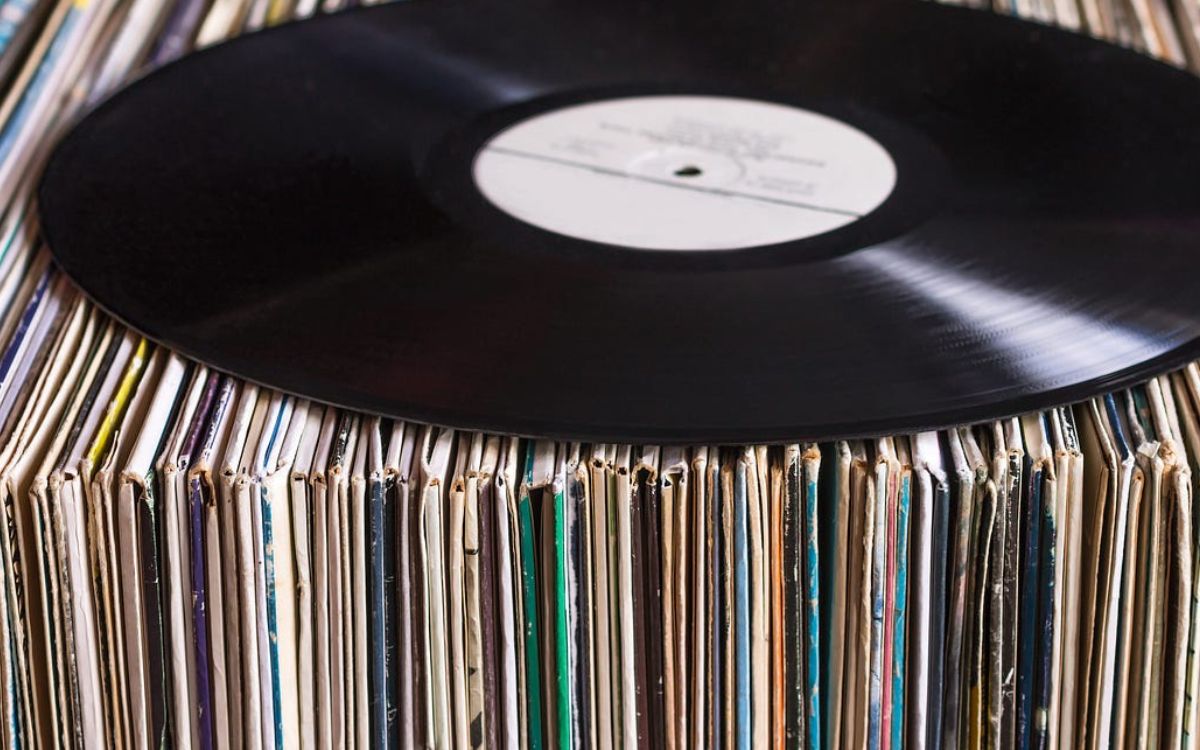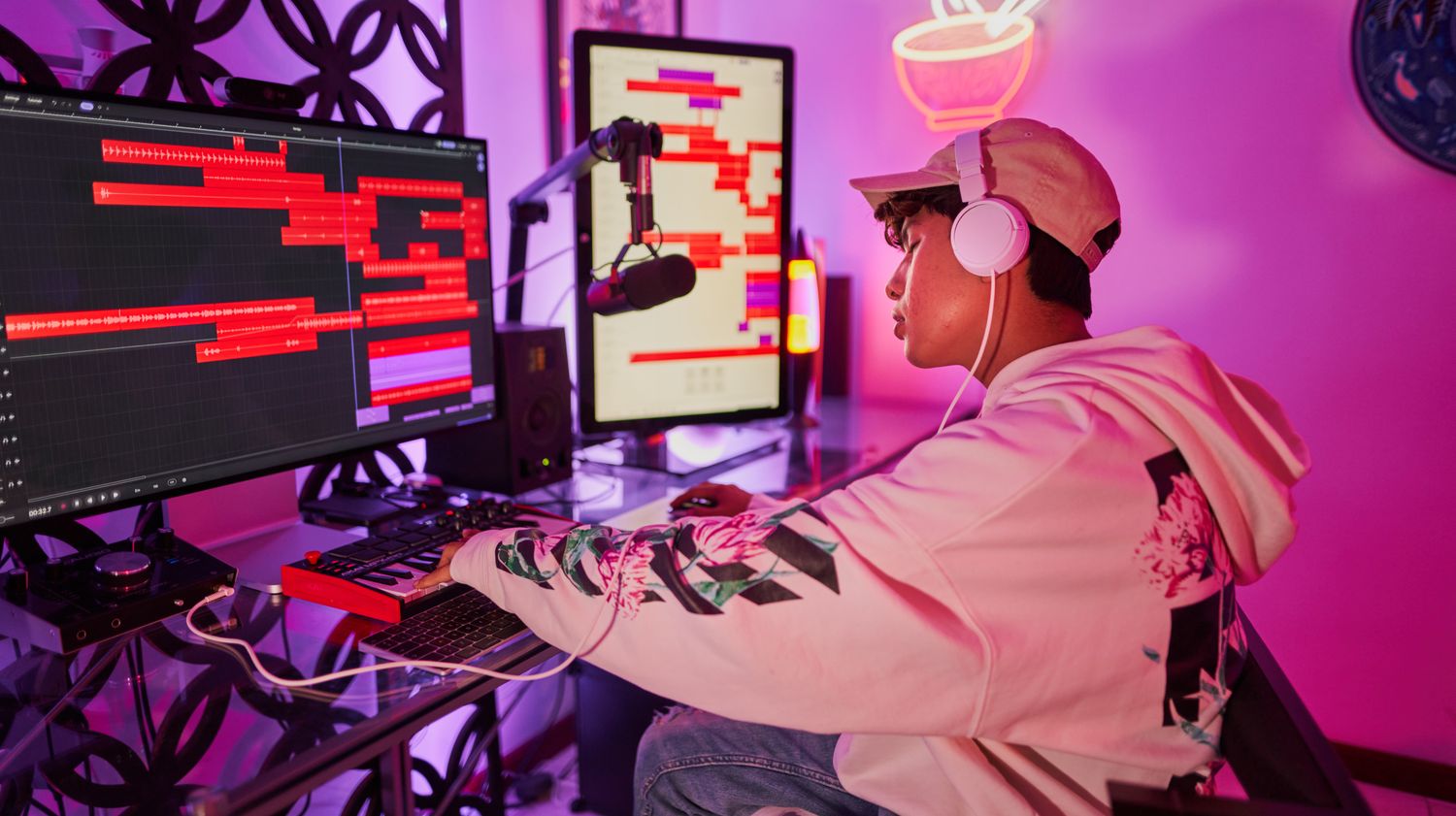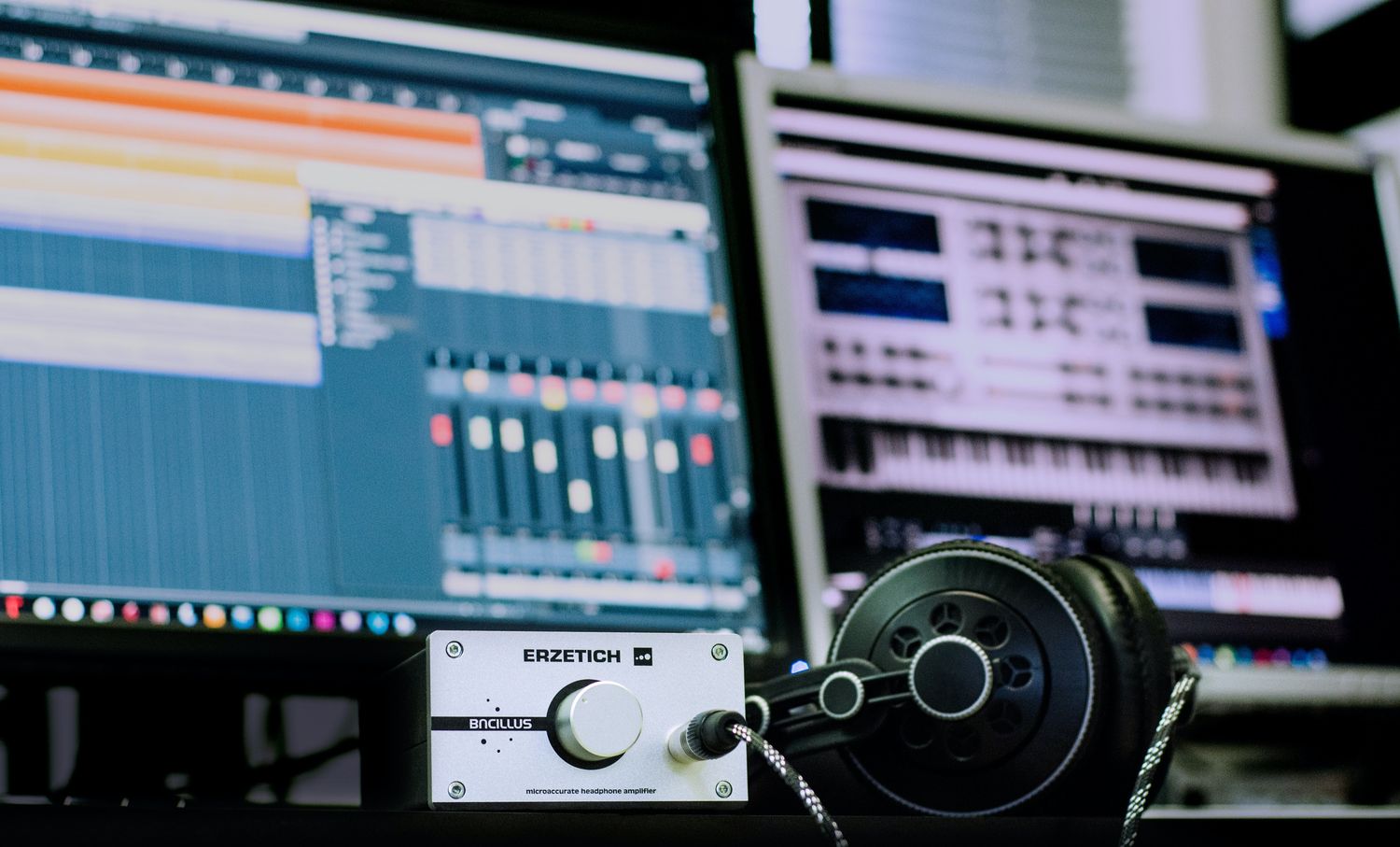Home>Production & Technology>Digital>How Important Is The Computer For Playing Digital Music


Digital
How Important Is The Computer For Playing Digital Music
Published: March 10, 2024
Discover the significance of computers in digital music production and playback. Explore the essential role of technology in creating and enjoying digital music.
(Many of the links in this article redirect to a specific reviewed product. Your purchase of these products through affiliate links helps to generate commission for AudioLover.com, at no extra cost. Learn more)
Table of Contents
Introduction
In today's digital age, music has become an integral part of our lives. The way we create, consume, and interact with music has undergone a significant transformation with the advent of digital technology. Gone are the days when music was confined to physical formats such as vinyl records, cassette tapes, or CDs. The digital revolution has not only revolutionized the way music is produced and distributed but has also fundamentally altered the way we experience and enjoy it.
The convergence of music and technology has opened up a world of possibilities, allowing music enthusiasts to explore a vast and diverse array of sounds with just a few clicks. At the heart of this digital music revolution lies the computer, a versatile and indispensable tool that has redefined the landscape of music creation, production, and consumption.
As we delve into the realm of digital music, it becomes evident that the role of computers in shaping this musical landscape cannot be overstated. From the creation of intricate melodies to the seamless streaming of our favorite tunes, computers have become the backbone of the modern music industry. Whether it's a budding musician experimenting with digital audio workstations or a casual listener curating personalized playlists, the computer serves as a gateway to a universe of musical possibilities.
In this article, we will explore the pivotal role of computers in the realm of digital music. We will delve into the evolution of digital music, examine the advantages and disadvantages of using computers for playing digital music, and gain a deeper understanding of how this technology has revolutionized the way we engage with musical artistry. Join us on this journey as we unravel the intricate interplay between computers and digital music, and discover the profound impact they have had on shaping the musical landscape of the 21st century.
The Evolution of Digital Music
The evolution of digital music has been a fascinating journey marked by groundbreaking technological advancements and paradigm shifts in the way music is created, distributed, and consumed. The roots of digital music can be traced back to the late 20th century when the emergence of digital audio technology laid the foundation for a seismic transformation in the music industry.
Early Digital Formats
The early stages of digital music witnessed the emergence of compact discs (CDs) as a revolutionary medium for storing and playing music. CDs replaced traditional analog formats and offered superior sound quality, durability, and the ability to store a significantly larger amount of music. This transition from analog to digital marked a pivotal moment in the history of music, setting the stage for further innovations in the digital realm.
The Rise of MP3 and Digital Distribution
The advent of the MP3 format in the 1990s heralded a new era of digital music consumption. MP3, with its efficient compression algorithm, enabled users to store and share music files with unprecedented ease. This led to the proliferation of digital music piracy and the rise of peer-to-peer file-sharing networks, fundamentally altering the dynamics of music distribution.
Digital Audio Workstations and Home Recording
The democratization of music production became a reality with the widespread availability of digital audio workstations (DAWs) and home recording equipment. Musicians and producers gained access to powerful tools that allowed them to create, edit, and mix music with remarkable precision and flexibility. This shift empowered artists to explore new sonic frontiers and experiment with innovative production techniques, blurring the lines between traditional genres and giving rise to a diverse spectrum of musical expressions.
Streaming and On-Demand Music Services
The advent of streaming platforms and on-demand music services revolutionized the way people access and experience music. With the rise of platforms such as Spotify, Apple Music, and Tidal, music consumption transcended physical and digital ownership, offering listeners instant access to an extensive catalog of songs and albums. This shift towards streaming not only transformed the revenue model of the music industry but also reshaped the dynamics of music discovery and curation.
The Intersection of Music and Technology
The evolution of digital music has been intricately intertwined with technological innovations, shaping the way we create, consume, and interact with musical content. From the emergence of digital formats to the democratization of music production and the rise of streaming services, the evolution of digital music has been a testament to the transformative power of technology in redefining the musical landscape.
This journey of evolution continues to unfold, with emerging technologies such as artificial intelligence and virtual reality poised to further reshape the future of digital music, offering new avenues for artistic expression and immersive musical experiences. As we navigate this ever-changing terrain, one thing remains certain: the evolution of digital music is a testament to the enduring synergy between creativity and technology, propelling the art form into uncharted realms of sonic exploration and innovation.
The Role of Computers in Digital Music
The pivotal role of computers in the realm of digital music is undeniable, serving as the linchpin that underpins the entire ecosystem of music creation, production, and consumption. Computers have emerged as indispensable tools, empowering musicians, producers, and listeners to engage with music in ways that were previously unimaginable. At the core of this transformative role lies the seamless integration of hardware and software, enabling a myriad of functions that have revolutionized the music industry.
Music Creation and Production
Computers have democratized the process of music creation, providing artists with powerful digital audio workstations (DAWs) that serve as virtual studios, equipped with an extensive array of instruments, effects, and recording capabilities. This shift has dismantled traditional barriers to entry, allowing aspiring musicians to unleash their creativity without the need for expensive studio time or specialized equipment. The flexibility and versatility offered by DAWs have catalyzed a wave of innovation, enabling artists to experiment with diverse genres, intricate soundscapes, and unconventional production techniques.
Digital Instrumentation and Sampling
The advent of virtual instruments and sample libraries has expanded the sonic palette available to musicians, offering a vast repertoire of realistic emulations of traditional instruments, as well as futuristic synthesizers and sound modules. This digital instrumentation has transcended the limitations of physical instruments, empowering composers and producers to craft rich, multi-layered compositions with unparalleled sonic depth and complexity. Additionally, sampling technology has facilitated the manipulation and recontextualization of existing musical elements, fostering a culture of sonic exploration and reinterpretation.
Music Distribution and Consumption
Computers have redefined the way music is distributed and consumed, with digital platforms serving as the primary conduit for accessing and sharing musical content. Streaming services, online stores, and digital libraries have become the go-to destinations for discovering, purchasing, and streaming music, offering listeners instant access to an extensive catalog of songs and albums. This shift towards digital distribution has transcended geographical boundaries, enabling artists to reach global audiences and fostering a diverse, interconnected musical community.
Live Performance and Digital Integration
The integration of computers into live performance setups has revolutionized the way musicians engage with their audiences. From triggering samples and backing tracks to controlling elaborate lighting and visual displays, computers have become indispensable companions on stage, enhancing the immersive nature of live music experiences. This seamless integration of digital technology has blurred the lines between studio production and live performance, allowing artists to deliver captivating, multi-sensory spectacles that transcend traditional concert paradigms.
In essence, the role of computers in digital music extends far beyond mere facilitation; it embodies a paradigm shift that has redefined the very essence of musical expression and consumption. As we continue to navigate this dynamic landscape, the symbiotic relationship between computers and music will undoubtedly pave the way for new frontiers of creativity, innovation, and sonic exploration, shaping the future of digital music in ways that are both profound and exhilarating.
Advantages of Using Computers for Playing Digital Music
The utilization of computers for playing digital music offers a myriad of advantages that have revolutionized the way we create, consume, and interact with musical content. From seamless integration and versatility to accessibility and innovation, the advantages of leveraging computers in the realm of digital music are instrumental in shaping the modern musical landscape.
1. Versatility and Flexibility
Computers serve as versatile platforms for playing digital music, offering a wide array of software applications and tools that cater to diverse musical preferences and production requirements. Whether it's the use of digital audio workstations (DAWs) for intricate music production or the utilization of software synthesizers and samplers for creating unique sonic textures, the versatility and flexibility afforded by computers empower musicians and producers to explore new sonic frontiers and experiment with innovative production techniques.
2. Seamless Integration of Hardware and Software
The seamless integration of hardware and software in computer-based music systems facilitates a cohesive and efficient workflow for musicians and producers. From MIDI controllers and audio interfaces to digital instruments and effects processors, computers serve as central hubs that unify disparate elements of music production, enabling a streamlined and integrated approach to creating and performing music.
3. Accessibility and Affordability
The accessibility and affordability of computer-based music systems have democratized the process of music creation and production, breaking down traditional barriers to entry. Aspiring musicians and producers can leverage cost-effective hardware and software solutions to embark on their creative journeys, eliminating the need for expensive studio equipment and enabling a wider demographic of artists to participate in the musical landscape.
4. Integration of Multimedia Elements
Computers enable the seamless integration of multimedia elements into music production and performance, blurring the boundaries between auditory and visual experiences. From synchronized visual projections and lighting effects to interactive audio-visual installations, the integration of computers facilitates immersive and multi-sensory musical experiences, enhancing the impact and resonance of live performances and multimedia artistry.
5. Innovation and Experimentation
The use of computers for playing digital music fosters a culture of innovation and experimentation, empowering artists to push the boundaries of traditional musical conventions. From algorithmic composition and generative music systems to interactive installations and virtual reality experiences, computers serve as catalysts for pioneering new forms of musical expression and engaging with audiences in novel and captivating ways.
In essence, the advantages of using computers for playing digital music extend far beyond mere convenience; they embody a paradigm shift that has redefined the very essence of musical expression and consumption. As we continue to navigate this dynamic landscape, the symbiotic relationship between computers and music will undoubtedly pave the way for new frontiers of creativity, innovation, and sonic exploration, shaping the future of digital music in ways that are both profound and exhilarating.
Disadvantages of Using Computers for Playing Digital Music
While computers have undeniably revolutionized the landscape of digital music, their pervasive role in music creation, production, and consumption is not without its drawbacks. It is essential to acknowledge the potential disadvantages associated with relying on computers for playing digital music, as they shed light on the complexities and challenges inherent in this technological paradigm.
-
Dependency on Technology: The reliance on computers introduces a level of dependency on technology, making music production and performance susceptible to technical malfunctions, software crashes, and hardware failures. This vulnerability can disrupt creative workflows and live performances, leading to potential setbacks and interruptions that may compromise the integrity of musical experiences.
-
Complexity and Learning Curve: The intricate nature of computer-based music systems, including digital audio workstations (DAWs) and software instruments, presents a steep learning curve for aspiring musicians and producers. Navigating the myriad features and functionalities of music software demands a significant investment of time and effort, potentially deterring individuals who are daunted by the complexities of digital music production.
-
Digital Fatigue and Overload: The ubiquity of digital interfaces and the constant exposure to screen-based environments in music production can contribute to digital fatigue and sensory overload. Prolonged periods of working with computers for music creation and editing may lead to mental and visual fatigue, impacting the overall well-being and creative stamina of artists and producers.
-
Fragmentation of Musical Experience: The digitization of music consumption has led to a fragmented and ephemeral listening experience, characterized by the prevalence of short attention spans and algorithm-driven content curation. The abundance of digital music platforms and streaming services has contributed to a culture of disposable music consumption, potentially diluting the depth and longevity of musical engagement.
-
Loss of Tangibility and Physicality: The transition from physical formats to digital music has resulted in a loss of tangibility and physicality in musical artifacts. The tactile experience of interacting with vinyl records, CDs, and analog instruments has given way to intangible, virtual interfaces, potentially diminishing the sensory richness and tactile engagement associated with traditional music mediums.
-
Cybersecurity and Data Vulnerability: The digital infrastructure underpinning computer-based music systems introduces concerns related to cybersecurity and data vulnerability. The storage and transmission of music files, intellectual property, and sensitive information through digital channels may expose artists and music industry professionals to potential cyber threats and data breaches, necessitating robust security measures and vigilance.
In navigating the realm of digital music, it is imperative to recognize the nuanced interplay between the advantages and disadvantages of leveraging computers for music creation and consumption. By acknowledging these potential drawbacks, stakeholders in the music industry can proactively address challenges, foster resilience, and cultivate a balanced approach to harnessing the transformative power of technology in the realm of digital music.
Conclusion
In conclusion, the symbiotic relationship between computers and digital music has ushered in a new era of artistic expression, technological innovation, and immersive sonic experiences. The evolution of digital music, propelled by the transformative role of computers, has redefined the way we create, consume, and interact with musical content. From the democratization of music production to the seamless integration of multimedia elements, the advantages of leveraging computers for playing digital music have reshaped the musical landscape in profound ways.
However, it is essential to acknowledge the potential drawbacks associated with this technological paradigm, including dependency on technology, digital fatigue, and the loss of tangibility in musical experiences. By recognizing these complexities, stakeholders in the music industry can navigate the digital terrain with a nuanced understanding of the challenges and opportunities inherent in the convergence of music and technology.
As we look to the future, the intersection of computers and digital music holds immense promise, offering new frontiers of creativity, collaboration, and sonic exploration. Emerging technologies such as artificial intelligence, virtual reality, and immersive audio systems are poised to further revolutionize the way we engage with music, presenting unprecedented opportunities for artists, producers, and listeners to embark on captivating musical journeys.
The profound impact of computers on digital music underscores the enduring synergy between human creativity and technological ingenuity. It is a testament to the resilience and adaptability of the music industry, as it continues to evolve in response to the dynamic interplay of digital innovation and artistic expression.
In essence, the role of computers in digital music transcends mere facilitation; it embodies a transformative force that has reshaped the very fabric of musical artistry. As we embrace the boundless possibilities that lie ahead, the enduring partnership between computers and digital music will continue to inspire, captivate, and redefine the sonic landscapes of tomorrow.











